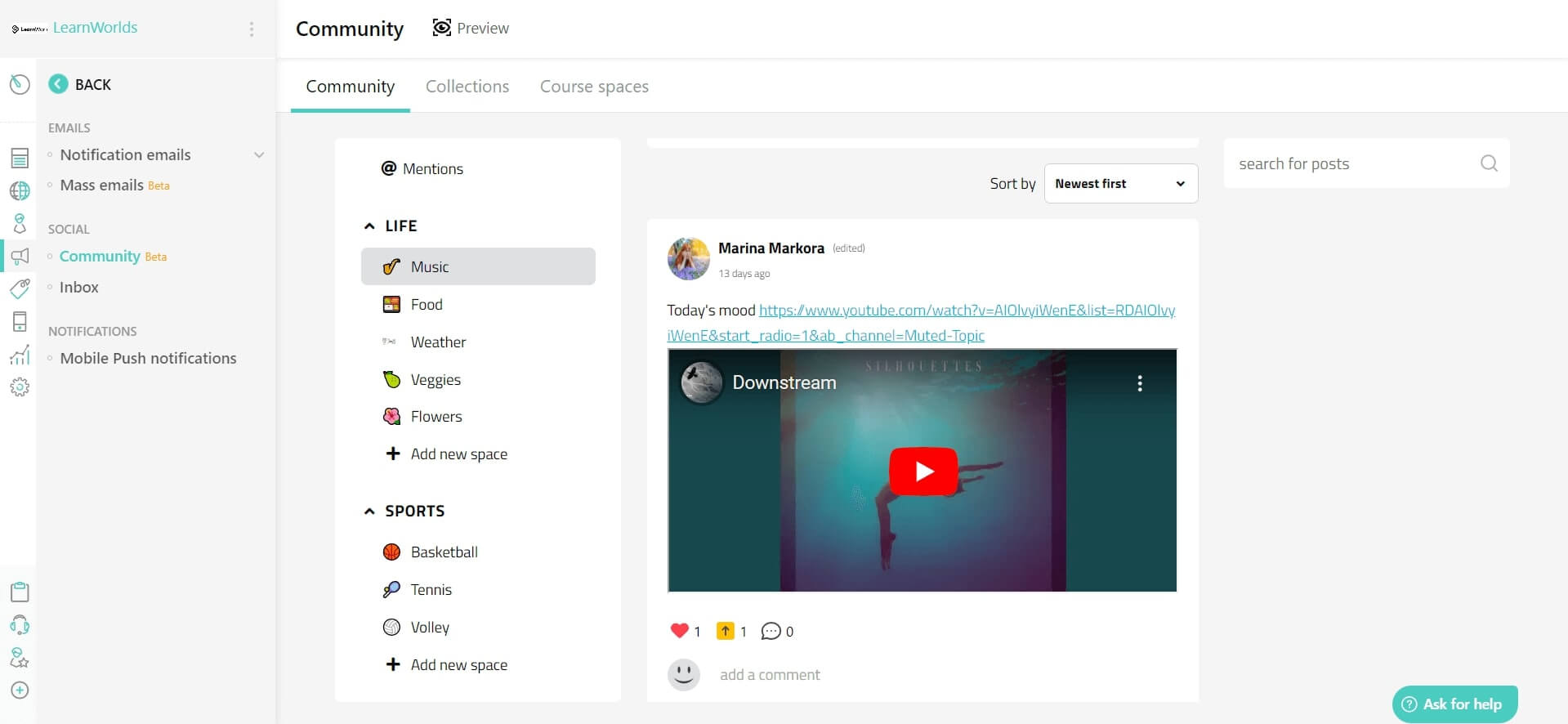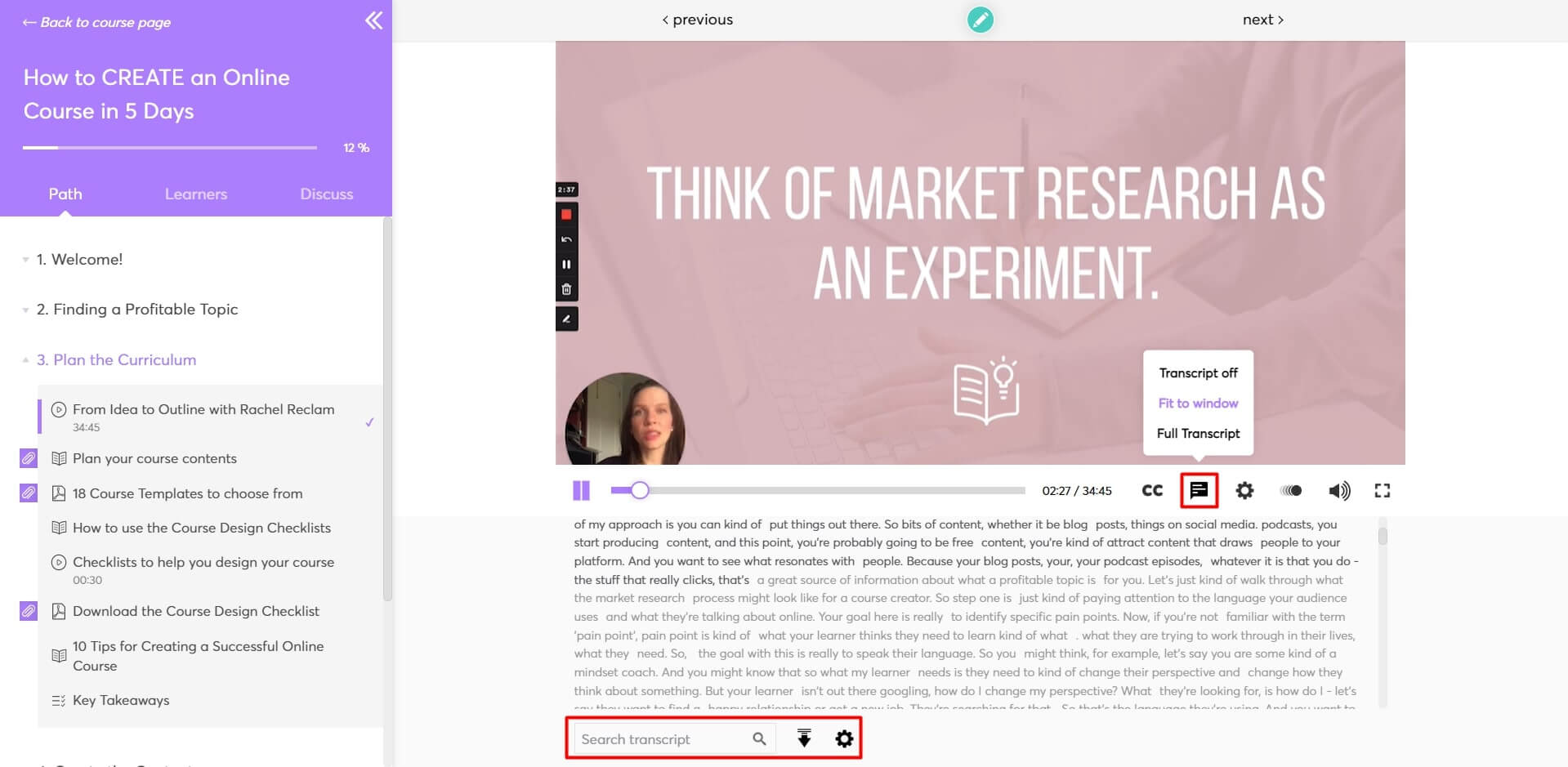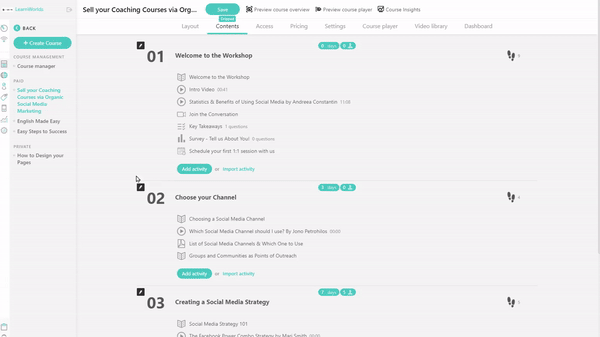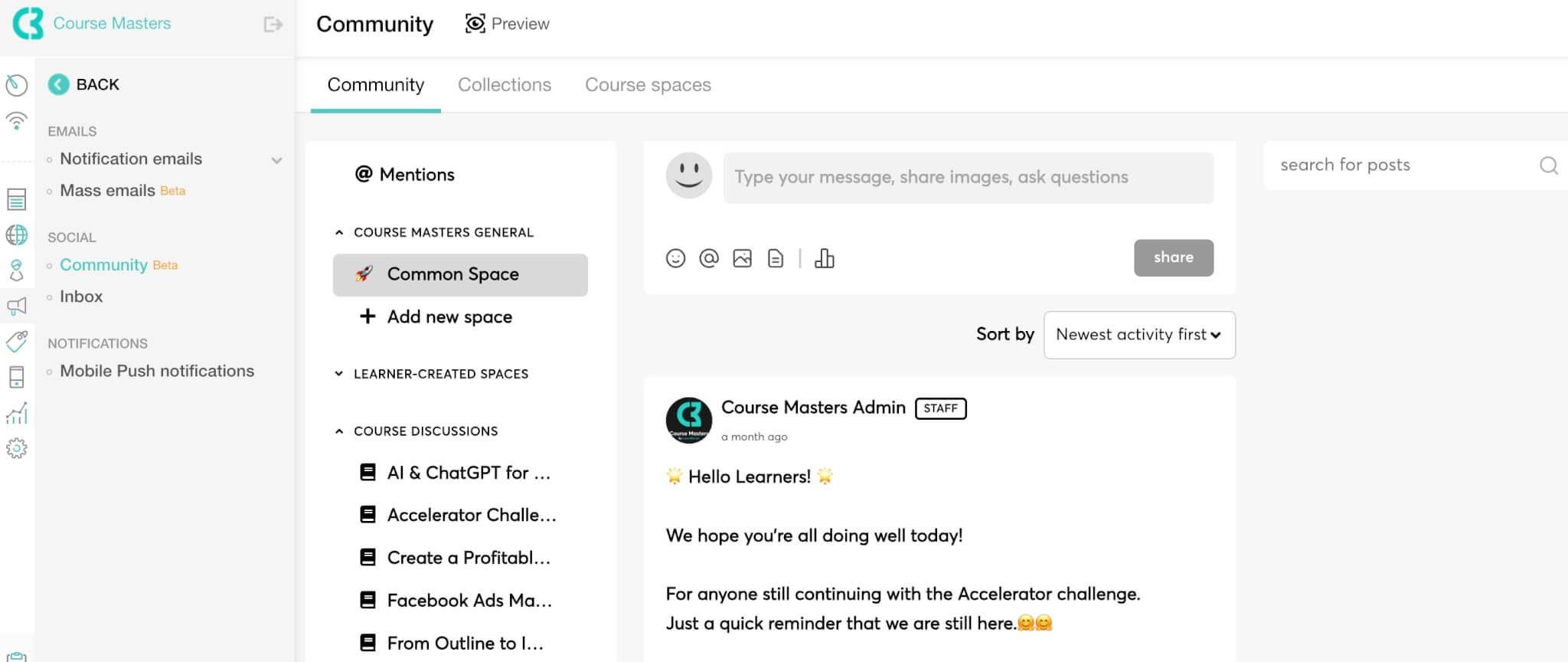Table of Contents
Online learning has emerged as a transformative force in education after the COVID-19 pandemic, tearing down traditional barriers and providing unprecedented access to knowledge. With technological advancements and the widespread availability of the Internet, students now more than ever, have the opportunity to engage in learning experiences beyond the limitations of physical classrooms.
Amidst this digital revolution, the significance of student engagement in the online learning environment cannot be overstated. Unlike traditional classrooms, where face-to-face interactions naturally foster engagement, online education requires deliberate efforts to keep students actively involved in learning.
Student engagement is the key to unlocking the full potential of online learning, influencing academic success, and increasing retention rates, and overall satisfaction. As we navigate the evolving landscape of education, understanding and addressing the factors that contribute to student engagement become essential.
This article serves as a comprehensive guide for educators, and institutions seeking effective strategies to increase student engagement in online learning.
In doing so, it looks into the challenges faced by students and provides actionable solutions and approaches that empower educators with the knowledge and tools necessary to create dynamic, interactive, and inclusive educational environments.
Understanding the Challenges of Online Learning
Even individuals with limited experience in digital learning often encounter immediate questions and considerations when discussing the topic:
These queries arise for good reason, as they align with some of the most prevalent challenges faced by students in online education. These challenges serve as tangible evidence, substantiating the need for a thoughtful exploration of the subject.
Technological Barriers
As online learning heavily relies on technology, students may face challenges related to access, hardware, or connectivity issues. Not everyone has equal access to high-speed internet, updated devices, or a quiet, distraction-free environment, creating disparities in the learning experience.
Isolation and Lack of Social Interaction
Traditional classrooms by default provide a social setting that fosters collaboration and discussion. In contrast, online learners may experience feelings of isolation due to limited face-to-face interaction, potentially affecting their motivation and engagement levels. This becomes worse for shy students who can’t express themselves as easily.
Time Management and Self-Discipline
Online learners often need strong self-discipline and effective time management skills. Balancing coursework with other responsibilities can be challenging, leading to procrastination or burnout if not managed effectively. More often than not, when students feel like they can’t keep up, they become overwhelmed and abandon their studies altogether.
Limited Feedback and Communication
The absence of immediate feedback and in-person communication with instructors can hinder student understanding. Waiting for responses to emails or discussion posts may lead to frustration and disengagement. This is a huge problem since students then fail to get the constructive criticism they need at the time they need it the most.
Adaptation to New Learning Platforms
Switching from traditional learning methods to online platforms can be daunting for some students as well. Navigating various learning management systems (LMS) and understanding new tools may initially pose a barrier to engagement, especially to students who are not as familiar with using technology e.g. young or adult learners.
Impact of Challenges on Student Engagement
Such challenges pose a real threat to student engagement as each one influences the process of delivering effective online learning experiences in one way or another:
Decreased Motivation and Participation
Technical issues, feelings of isolation, or time management struggles can diminish students’ motivation to actively participate in online courses. A lack of engagement may lead to missed assignments, reduced participation in discussions, and ultimately lower academic performance.
Increased Dropout Rates
Students facing multiple challenges in the online learning environment may be more prone to dropping out. Without the support structures present in traditional classrooms, those struggling to overcome obstacles may opt to discontinue their training or education.
Diminished Sense of Community
A sense of community is crucial for student engagement. Social interactions with peers and instructors offer this sense of belonging which is often linked to more effective learning outcomes. When students feel disconnected due to technological barriers or limited social interaction, this feeling of commitment to the learning community may decline.
Underdeveloped Critical Skills
In the absence of immediate feedback and face-to-face interaction, students may struggle to develop critical thinking and problem-solving skills. The impact of this limitation can extend beyond the online learning environment into other academic, career, and professional pursuits.
Exploring Diverse Learning Styles, Needs & Preference
An excellent way to identify and tackle challenges early on is by browsing and identifying the diverse learning styles, needs, and preferences of your students.
We know that every student is different, and showing the willingness to understand and further explore those personal and academic barriers that are hindering the process of learning is a must.
For example, students have diverse learning styles including visual auditory, and kinesthetic preferences. The way they prefer to look or even prepare themselves to do so is always dissimilar and there is no way a one-approach-fits-all will work.
The solution? Online courses should incorporate varied instructional methods, such as video lectures, interactive simulations, and hands-on activities catering to all these learning styles.
But we are not merely talking about learning styles here. There is also:
By addressing these challenges and recognizing the diversity of learning styles and preferences, you will be able to create a more inclusive and engaging elearning environment, promoting student success and satisfaction.
Key Strategies for Increasing Online Student Engagement
Moving on to the more practical side of things, you will need to implement some strategies in your online teaching, that will allow you to engage students at the maximum potential.
Everything starts with creating a positive learning environment for your students.
Creating an inclusive and supportive online community
In distance learning, fostering a sense of community is vital as it inspires inclusivity. Through this space, instructors can initiate regular introductions, encouraging students to share their backgrounds, experiences, thoughts, and opinions.

Course discussions can serve as virtual meeting points as well allowing students to exchange ideas, ask questions, and build meaningful connections with their peers. Facilitating open communication and actively addressing diverse perspectives fosters a supportive community that transcends physical boundaries.
💁🏼♀️ Need help building your learning community? Check out our step-by-step guide.
Utilizing collaborative tools and platforms
Leveraging technology for collaboration is key to establishing a positive online learning environment as well. You can choose to integrate collaborative tools such as Google Workspace to facilitate real-time collaboration on documents and projects.
You can also conduct live classes or create breakout rooms with video conferencing platforms like Zoom or Webex, enabling small-group discussions that promote teamwork and peer-to-peer interaction. By incorporating such tools, you can simulate the collaborative aspects of traditional classrooms in the digital space, encouraging active participation and shared learning experiences.
💁🏼♀️ Read 9 Tips To Help Engage Your Learners In Zoom Classes
Prefer an all-in-one solution? You can try LearnWorlds. Get your free 30-day trial today!
Your professional looking Academy in a few clicks
Start FREE TrialMaking Use of Interactive Learning Materials
While creating an inclusive community is key, building interactive course content is equally important, because it has the power to enhance the student learning experience and offer something truly remarkable and unique.
Adding multimedia elements (videos, images, and simulations)
Embracing multimedia elements enriches the learning experience by catering to diverse learning styles. Incorporate engaging video lectures, create presentations, visual diagrams, and interactive simulations to convey complex concepts.
Videos – in particular, offer a dynamic way to present information, making it more accessible and appealing. By diversifying content delivery, you can cater to the visual, auditory, and kinesthetic preferences of students, enhancing their overall understanding and retention of the course material.
💁♂️ Here are 10 Ways to Increase Student Participation in Your Online Course
Embracing gamification to enhance interest and participation
Gamification injects an element of fun into the learning process, motivating students to actively participate and stay engaged. Incorporate game-like elements, such as point systems, badges, or leaderboards, to reward achievements and progress.
Why gamification works:
Completing gamified activities creates a sense of accomplishment and encourages active learning in remote learning settings. By transforming the learning experience into a game-like adventure, you can tap into intrinsic motivation, making the online learning journey both enjoyable and impactful.
Implementing Varied Assessment Methods
When creating your courses, make sure to set clear learning objectives and expectations. These goals will offer structure and direction helping you design the student engagement strategies in your learning activities and assessments effectively.
Diversifying assessment formats (quizzes, discussions, projects)
Relying on a variety of assessment formats caters to the diverse strengths of students and provides a more holistic evaluation. Mix traditional quizzes with open discussions, group projects, and hands-on assignments.
This approach accommodates different learning styles and allows students to showcase their understanding through various mediums. The diversified learner assessment strategy also promotes critical thinking and application of knowledge, fostering a deeper engagement with the course content.
Providing timely and constructive feedback
Timely and constructive feedback is a powerful tool for maintaining student engagement. Regularly assess and provide feedback on assignments, quizzes, and discussions, emphasizing both strengths and areas for improvement.
Personalized feedback has the power to guide students in their learning journey and demonstrate the instructor’s commitment to their success. Implementing feedback loops creates a continuous learning process, encouraging students to actively participate and refine their understanding based on valuable input.
Fostering Communication and Interaction
Effective communication is the lifeblood of any learning environment, and in the virtual classroom, discussion forums, and instant messaging or chat features play a pivotal role in fostering student engagement.
Utilizing discussion forums and chat features
By creating virtual spaces for discussions, educators encourage collaborative learning, enabling students to share insights, ask questions, and explore diverse perspectives.
Online discussions encourage ongoing interaction, promoting a sense of community and shared learning experiences. Furthermore, real-time chat features facilitate immediate communication – even in asynchronous time, allowing students to connect with peers and instructors, promoting a dynamic exchange of ideas.
Hosting virtual office hours and Q&A sessions
To bridge the gap between virtual and face-to-face interactions, hosting virtual office hours and Q&A sessions becomes instrumental. These synchronous opportunities allow students to connect with instructors in real-time, seeking clarification on the course material, discussing assignments, or addressing any concerns they may have.
Virtual office hours provide a personalized touch to online education, fostering a sense of accessibility and support. Also, Q&A sessions can be structured in live sessions or spontaneous interactions, creating an environment where students feel comfortable engaging with the course material and seeking guidance whenever needed.
Your professional looking Academy in a few clicks
Start FREE TrialAdapting eLearning Content for Accessibility
Accessibility is a cornerstone of inclusive education. In the online learning environment, it is crucial to ensure that educational materials are accessible to all students, regardless of their abilities.
Making learning accessible to all students
This involves adhering to web accessibility standards (such as WCAG) to make digital content perceivable, operable, and understandable for individuals with various disabilities. Utilizing alt text for images, for example, providing closed captions for videos, and ensuring compatibility with screen readers – or even mobile devices, are essential steps in creating content that accommodates diverse learning needs.
This commitment to accessibility benefits students with disabilities and enhances the overall usability and quality of the educational materials. At the same time, it gives all students the chance to engage with your content effectively and meaningfully.
💁♂️ Need help with eLearning accessibility? Check these 12 Tips to Make Your Online Courses More Accessible to Everyone
Providing alternative formats for learning materials
Recognizing the diversity in learning styles and preferences, and offering alternative formats for learning materials is a proactive approach to engaging a broad spectrum of students.
This may include providing transcripts for videos, offering downloadable PDFs or ebooks, alongside online readings, or presenting information through podcasts or audio formats. By catering to different learning modalities, you can create a more inclusive learning environment that accommodates the varied needs and preferences of students.

Additionally, offering flexibility in accessing materials contributes to a learner-centric approach, empowering students to choose the format that best suits their learning style.
BONUS: Leveraging Technology to Boost Student Engagement
The integration of emerging technologies in online education has the potential to revolutionize the learning experience. Particularly promising technologies are virtual reality (VR), and augmented reality (AR) applications, artificial intelligence (AI), and modern learning management systems (LMS).
● Virtual reality and augmented reality applications
Virtual reality and augmented reality have transcended the realm of entertainment and are increasingly finding applications in education. Virtual reality immerses students in a computer-generated environment, providing realistic simulations and hands-on experiences.
Augmented reality overlays digital content onto the real world, enhancing the learning environment with interactive elements. These technologies can transport students to historical events, enable virtual field trips, and facilitate immersive science experiments, fostering a deeper and more engaging understanding of complex concepts.
● Artificial intelligence for personalized learning experiences
Artificial intelligence (AI) is reshaping the world of education by offering additional personalization. AI algorithms can analyze student data to identify individual learning styles, strengths, and weaknesses.
This data-driven approach allows educators to tailor educational content, pacing, and assessments that meet the unique needs of students. Adaptive learning platforms powered by AI can provide real-time feedback, recommend additional resources, and create a customized learning path, maximizing student engagement and understanding.
💁♂️ Learn how to create online courses using LearnWorlds AI Assistant.
● Utilizing Learning Management System (LMS) Features
Last but not least – Learning Management Systems (LMS) serve as the backbone of online education, offering a centralized platform for course administration, content delivery, student management, and interaction.
Leveraging the features and capabilities of your chosen LMS and taking advantage of them to the fullest, can significantly enhance student engagement and provide a dedicated hub for learners to meet, engage, and acquire knowledge.
When using an LMS, here are a few handy tips you can utilize to increase student participation:
Only a solid LMS that prioritizes student engagement has likely tackled all of the hurdles online students face and already brainstormed savvy ways to conquer them, like LearnWorlds has.
Your professional looking Academy in a few clicks
Start FREE Trial🌍 Maximizing the potential of discussion boards and community
A dedicated community, discussion boards and forums does wonders especially within an LMS which provides the space for collaborative learning and meaningful discussions. As an educator, you can choose when and how to reach out to your students, foster engagement by creating thought-provoking discussion topics, introducing challenges, encouraging peer interaction, and actively participating in conversations.
You can also choose to post announcements that can also be used to provide updates, highlight important milestones, and keep students informed about upcoming activities or even assignment deadlines.
✍🏻 Incorporating online quizzes and interactive assignments
The majority of LMSs already come equipped with tools for creating and managing online quizzes and interactive assignments.
LearnWorlds is one step ahead with its own powerful Assessment Builder, allowing you to create multiple types of assessments by choosing from 16 diverse question types including multiple choice, multiple answers, short answer, match questions, and even video or audio questions, graded SCORM assessments, self-assessments, and more!

Interactive quizzes and hands-on assignments keep students actively involved in the learning process, transforming passive recipients into active contributors. This interactivity enhances comprehension and retention while catering to diverse learning styles.
But LearnWorlds’ capabilities don’t stop here, of course!
💬 Offering prompt feedback on forms & assessments
As discussed earlier, feedback is a crucial part of learning. Without it students cannot learn from their mistakes, and might even get disinterested in the learning procedure entirely.
The ability to offer prompt feedback is possible with LearnWorlds, whether students are submitting a form or an assessment (exam, self-assessment, certificate).

You can provide automated or manual feedback, or combine them. For example, you may offer feedback to a question instantly and then come back later to offer manual feedback – editing and tailoring it to the specific student’s needs.
For both forms and assessments you have the option to present a feedback report either as a popup in the course player, embedded in the ending screen, or as a downloadable PDF.
What to include in your assessment feedback report? Here is what you can do with LearnWorlds:
Features like these not only offer a flexible way to assess student understanding and knowledge but also promote participation. They get students actively involved in the learning process, while offering them something valuable in return.
💁🏼♀️ Get additional guidance on how to offer feedback with LearnWorlds here.
Ready to Boost Student Engagement in the Online Classroom?
Enhancing student engagement in online learning is a multifaceted approach that combines pedagogical methods, technology integration, and understanding diverse learner needs. In this effort, it’s important to create a positive and inclusive environment and make use of interactive materials in course activities to cultivate active and motivated learners.
The collaborative effort between educators and students is crucial, with educators designing engaging course content, and students being present, actively participating and communicating. This symbiotic relationship fosters a commitment to educational success and more meaningful learning outcomes.
Along the way embracing innovative teaching practices, reviewing and improving learning strategies, will ensure that online education constantly evolves fostering a culture of exploration.
Your professional looking Academy in a few clicks
Start FREE TrialFurther reading you might find interesting:
Kyriaki is a Content Creator for the LearnWorlds team writing about marketing and e-learning, helping course creators on their journey to create, market, and sell their online courses. Equipped with a degree in Career Guidance, she has a strong background in education management and career success. In her free time, she gets crafty and musical.





